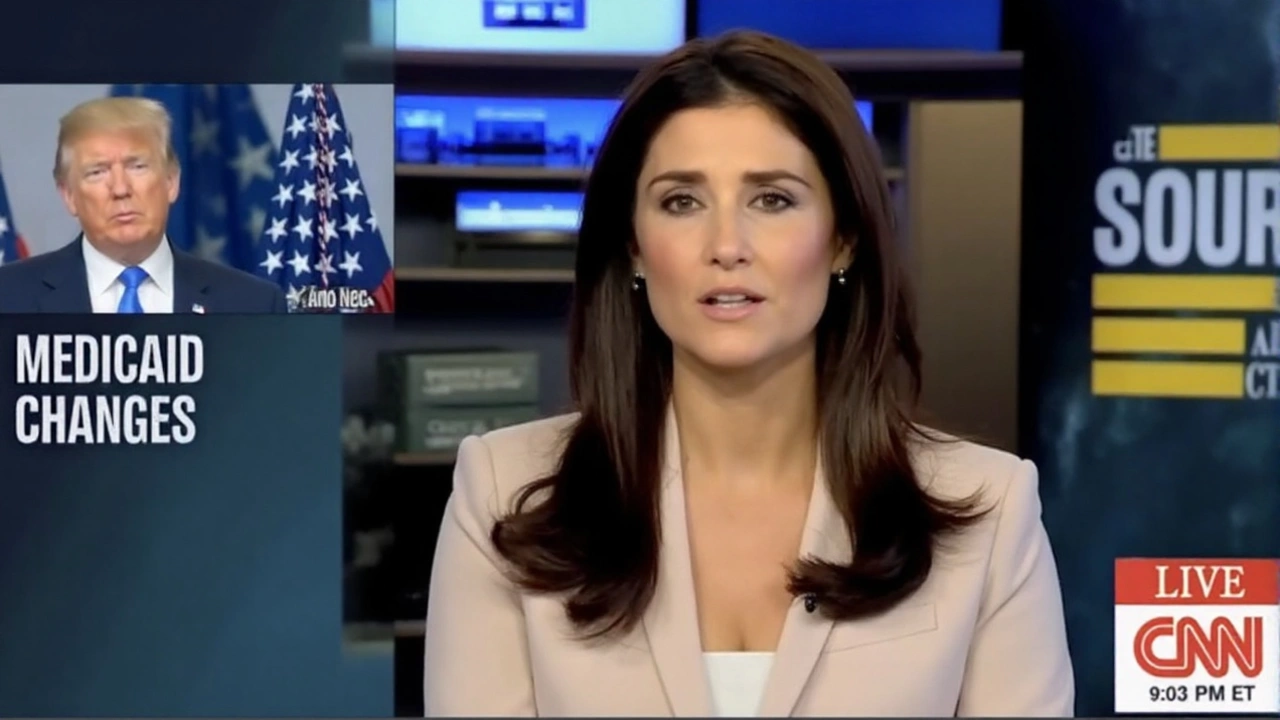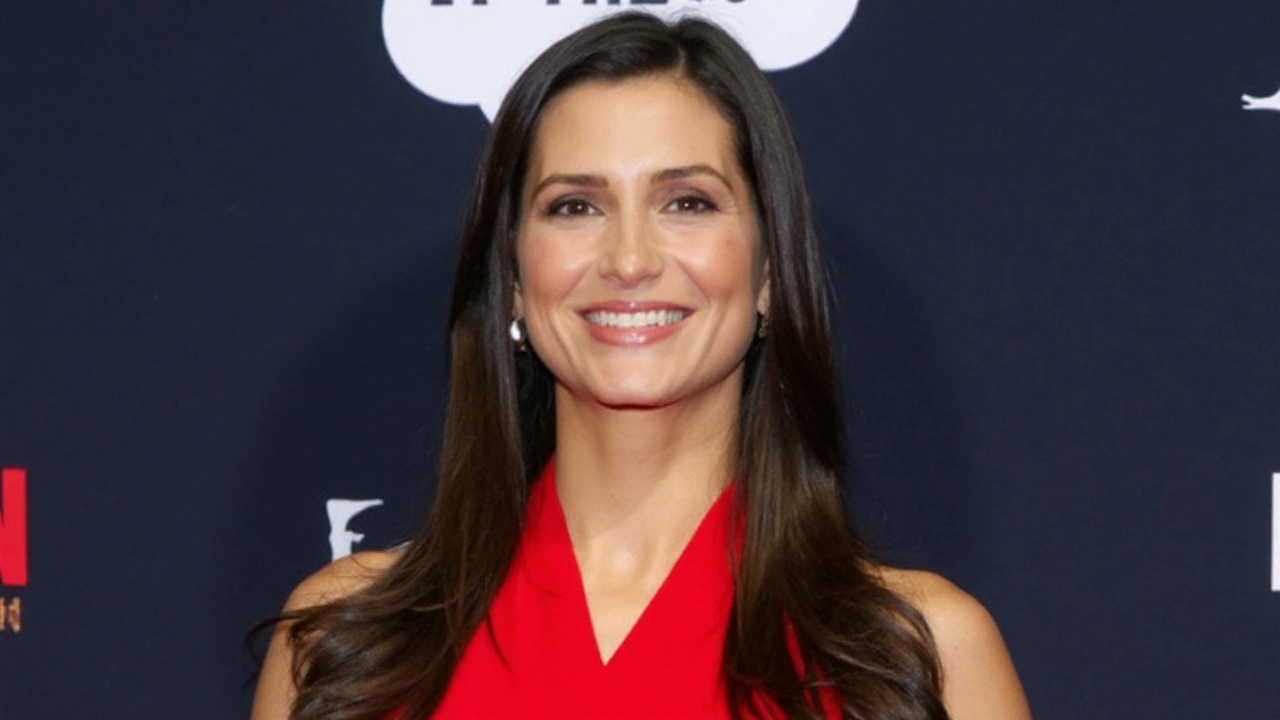From Alabama to CNN: the unexpected route
Start with this: the face you see grilling presidents in primetime once wrote about Game of Thrones and celebrity headlines. That gap says a lot about how fast media careers can change—and how hard she pushed. Born and raised in Alabama, Kaitlan Collins didn’t come from the East Coast media bubble. She moved through it anyway, on her own terms, and ended up anchoring one of CNN’s signature nightly programs.
Her first newsroom job wasn’t at a legacy paper or a big network desk. It was at The Daily Caller, the conservative site co-founded by Tucker Carlson. She went there as an entertainment reporter, posting on pop culture and celebrity news. It wasn’t glamorous, and it wasn’t political. It was a foothold. She’s been frank about that period—saying in early 2024 that she didn’t even realize what the outlet was when she signed on. In a field where people polish their backstory, that honesty stood out.
The pivot to politics came fast. Collins moved from lifestyle content to the White House beat inside The Daily Caller, covering a presidency defined by disruption. The briefings were chaotic, the news cycles relentless, and the stakes higher than most reporters face that early in their careers. She learned how to ask questions that cut through noise—short, specific, and unflinching. That skill got noticed beyond conservative media.
Then came CNN. She joined the network’s Washington team and quickly rose to chief White House correspondent. On air, she kept the same direct cadence—quick setups, tight follow-ups, no hedging. Off air, she was a tireless source builder. Colleagues say she prepared obsessively for every stakeout, every briefing, every trip. The White House press room can be performative. She kept it pragmatic: get an answer, or get the dodge on tape.
There were bumps—and they mattered. In 2018, after she pressed the administration with pointed questions, she was barred from a Rose Garden event. CNN protested. Other networks backed her. The message from journalists across the dial was simple: you don’t lock out a reporter for tough questions. That incident turned Collins into a symbol of a broader fight over access and accountability. It also made her name familiar to viewers who might never have seen a midday briefing.
By 2021, she had the top beat on the network’s political team as chief White House correspondent—one of the youngest to hold that title at CNN. She covered the transition, the early Biden years, and the fractious Congress that followed. During the pandemic’s prolonged policy battles—tests, mandates, school reopenings—her interviews with senior officials were tight and spare. She didn’t go for soundbite bait. She tried to peel back how decisions were made and what would change tomorrow.
Her standing inside the network rose again in 2022 when then-CNN chief Chris Licht tapped her to help reboot mornings. The assignment meant uprooting from Washington and moving to New York. She didn’t blink. “I didn’t even think of saying no,” she told The Washington Post. On CNN This Morning, Collins shared the desk with Poppy Harlow and Don Lemon while also serving as the show’s chief correspondent. That dual role let her toggle between field reporting and studio anchoring—two muscles most TV journalists don’t get to flex at the same time.
Morning TV is a grind—earlier alarms, quicker turnarounds, longer live blocks. Collins made it work. She anchored from breaking news zones and flew back for early-morning shows. Producers leaned on her sourcing in Washington and statehouses across the country. She could book lawmakers, prosecutors, and campaign strategists on short notice because they knew the questions wouldn’t be soft.
Less than a year later, the network asked for another jump—this time to primetime. In 2023, CNN launched The Source with Kaitlan Collins. The pilot averaged roughly 540,000 viewers, according to The Wrap, a solid starting point in a cutthroat hour dominated by deeply loyal audiences on competing networks. The show’s formula is simple: brisk opening, focused interviews, and legal explainers that de-jargon the day’s court filings and congressional probes. It’s built for nights where the news doesn’t slow down.
Her toughest assignment that year might have been the Trump town hall in New Hampshire. Collins pushed the former president to answer—on the 2020 election, on January 6, on policy. The exchange turned combative. He labeled her “a nasty person.” She stayed composed and kept pressing. The moment was polarizing. Some viewers blasted CNN for giving Trump a live platform. Others argued the tough questioning—with fact-checks and context in real time—was exactly what a journalist is supposed to do when a candidate repeats false claims. Either way, it put Collins at the center of a national media debate and confirmed that the network trusts her with the most volatile assignments.
By 2024, she’d become a fixture of campaign coverage—talking to voters in swing counties, interviewing legal experts after major court rulings, and picking apart new polling with a focus on turnout and persuasion. When President Joe Biden exited the 2024 race, Collins unpacked the moment on The Late Show with Stephen Colbert, mixing reporting with a clear-eyed look at how the decision upended the election’s final stretch. It wasn’t just a late-night cameo; it was a sign that her reporting travels beyond the Beltway audience.

Primetime pressure, public scrutiny, and a growing brand
Anchoring a nightly show is different from filing a White House live shot. You own the hour. You set the tone. Collins’ show centers on two ideas: power and accountability. Which policy will actually pass? Which court deadline will change a campaign’s strategy? Who is making money from a vote, a merger, or a regulation shift—and who pays the price? Guests tend to be decision-makers or people directly affected by those decisions. The point is to keep the stakes visible.
Collins’ questioning style helps. She doesn’t use long preambles or stack six queries into one. She asks a short question, waits, and then follows up specifically on the part a guest dodged. It sounds simple. On live television with a practiced politician, it’s not. Viewers notice when a host lets a guest filibuster. They also notice when a host cuts the monologue and narrows the answer. Collins does the latter consistently.
The backdrop here is CNN’s own upheaval. Leadership changes, format experiments, a morning reboot, then a primetime shuffle—this has been a turbulent few years. Collins’ rise happened inside that churn. Chris Licht, who hired her for mornings, praised her as authentic and not angling for something else. After he left, the network kept betting on her at 9 p.m., a signal that her show’s identity—fast, report-first, a little less theatrical—fit where CNN wanted to go.
She’s also built a profile beyond politics. Beginning in 2022, Collins leaned into bolder fashion choices at events and on social media—sleek silhouettes, sharp tailoring, and the occasional red-carpet risk like a fitted green satin corset dress or a deep-plunge black gown. It’s a tightrope for women on television: assert personal style without having it swallow the work. Collins has treated it like an extension of her on-air presence—confident, not flashy, and usually on her own schedule. A black belted mini-dress with gold buttons on The Late Show this August landed squarely in that lane.
If you watch closely, the wardrobe shift mirrors something else—comfort with visibility. Early in her career, Collins was doing thankless beats at odd hours. Now she’s a nightly host with a brand to define and an audience to keep. That means being selective about when to post, where to appear, and what to say. It also means taking hits. When Trump calls you “nasty,” it ricochets across the internet in minutes. When executives call you “tenacious,” it doesn’t trend. She has learned to treat both as background noise and stick to the reporting.
There’s also the Alabama factor. Collins talks about her roots without turning them into a brand. It shows up in the way she frames questions to voters far from the coasts. When she’s in a manufacturing town or a rural county, she tends to ask about groceries, gas, child care, and wages before she gets to the horse race. That keeps the conversation concrete. It also helps her escape the trap of DC-speak on a national show.
Colleagues describe her as relentless with prep. On big legal nights—say, an indictment or a Supreme Court decision—she sits with producers and lawyers and strips the story down to what matters on the clock: what changed today, what happens next, and who can appeal. The show then maps the next 24–72 hours so viewers know what to expect. That rhythm is why she books well with guests who actually hold power. They know she isn’t guessing.
Her career arc says something about this era of cable news. The model that rewarded big monologues and viral rants is giving way, at least in part, to reporters who can break news on air and keep guests honest without theatrics. Collins isn’t the only anchor doing that, but she’s a clear example. The move from The Daily Caller entertainment desk to a nightly CNN show wasn’t tidy or predictable. It didn’t need to be. She built range, then used it.
The numbers will keep shifting—ratings in that hour are a street fight against habit and loyalty on competing channels. What doesn’t shift is the demand for clarity when the political world turns opaque. Collins has stepped into that space. Some nights it’s a law-heavy hour. Other nights it’s retail politics from a county fair. The common thread is a reporter’s reflex: ask the question everyone is dancing around, then stay with it until it lands.
There’s another layer people forget: resilience. Her early years brought public pushback and private doubt. Getting blocked from a White House event can rattle a young reporter. Moderating a town hall where the subject attacks you on live television can, too. She absorbed both, adjusted, and kept going. That steadiness—more than any single viral moment—explains why she’s anchoring a primetime show in her early thirties.
Today, The Source sits at the intersection of law, politics, and the economy. Elections, prosecutions, Congress, markets—they all feed the rundown. The choice of guests reflects that mix: attorneys who can translate filings into plain English, lawmakers who will commit on policy, and community leaders who can talk about how a headline hits at street level. The pace is tight, but the goal is simple: less fog, more specifics.
If you map the arc from Alabama to New York, from pop culture write-ups to presidential interviews, you see a pattern: say yes to hard jobs, learn fast, keep your voice steady, and let the work stack up. That’s the transformation. It’s not a makeover; it’s a retooling. Collins built a toolkit in public—and then took it live at 9 p.m.
Will the next leap be bigger? Possibly. This is a business that rewards people who can hold an audience without overselling. For now, she’s doing exactly what got her here: asking sharp questions, booking consequential guests, and treating every hour as the one that counts.
